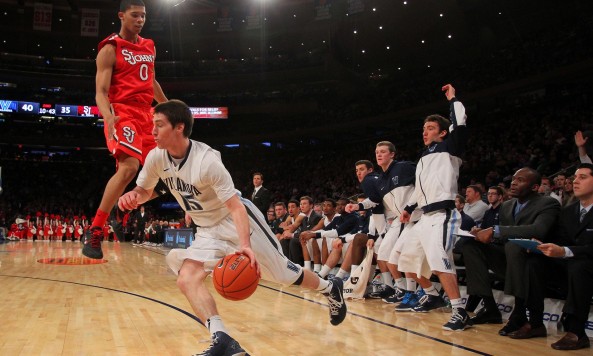This is day three of evaluating the upper-end talent in major conferences. Day one was the ACC, and yesterday was the AAC. Go to the first link (the ACC) to read up on methods and where the data comes from. There's also a graphic there that shows in very simple terms why landing top 100 recruits is probably more important than you think. If you're a Georgetown fan you should find a lot of confidence in that graphic, despite seeing Otto Porter scoot off to the NBA.
Now, on to the task at hand. The Big East is radically different now that several teams have left for the ACC. This, of course, caused the split (forming the American Conference). Now the Big East is smaller, and it features Xavier, Butler, and Creighton.
Regardless, it's a familiar program that is atop the talent pool. Here are the number of consensus top 100 recruits in each program.
Georgetown is the clear leader here, and they've reached that magic bar of depth (8+ top 100 players) which separate most of the dominant teams from the others. The second tier consists of Villanova, Marquette, and St. John's. It's not until Xavier that we pick up one of the new teams, and then Seton Hall and Creighton are at the bottom.
One of my favorite stats from the ACC piece is that there were 18 teams last year with zero or one top 100 recruits in the major conferences. Of those 18 teams, one had a winning conference record. Could Creighton be that team this year? Butler?
Drilling down to the higher-end talent, here are the top 50 recruits.
I'm surprised at how few (13) top 50 recruits these schools have. For reference, the ACC has 38.
Georgetown again leads the way, but St. John's has some top end kids as well.
For the top 25 recruits, I won't even put up a chart. The Big East has two, total.
It will be interesting to see how the Big East competes with the likes of the Big Ten and the ACC. It appears pretty likely that the Big East is about to take a major step down, but that could be cleaned up with some success on the recruiting trail. Georgetown has pulled in some top recruits already for the 2014 cycle, but the rest of the league needs to step it up.
























